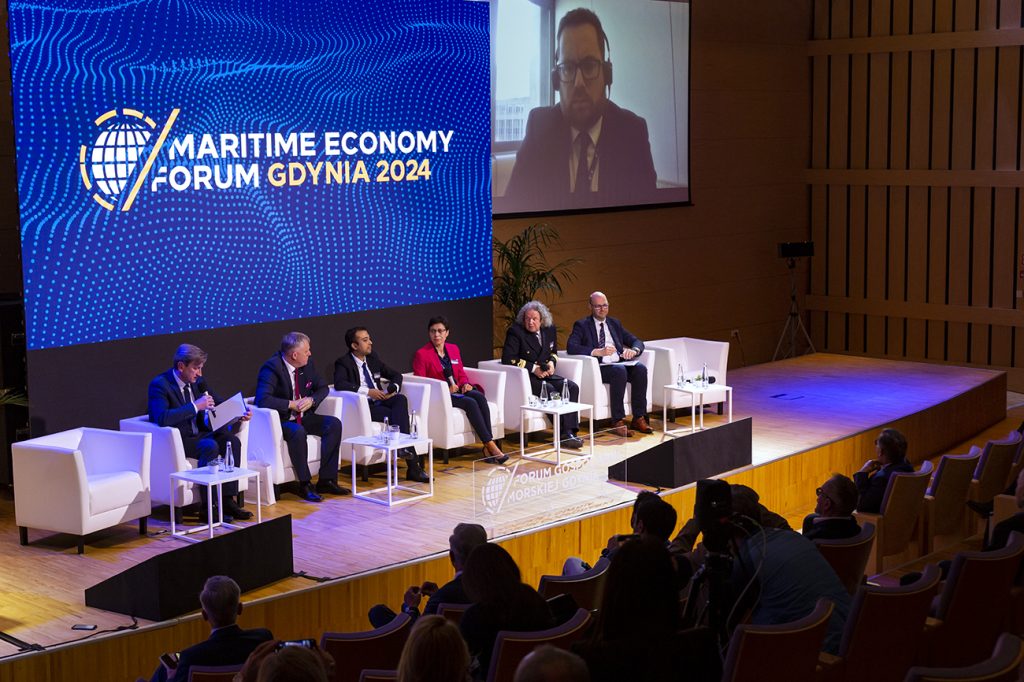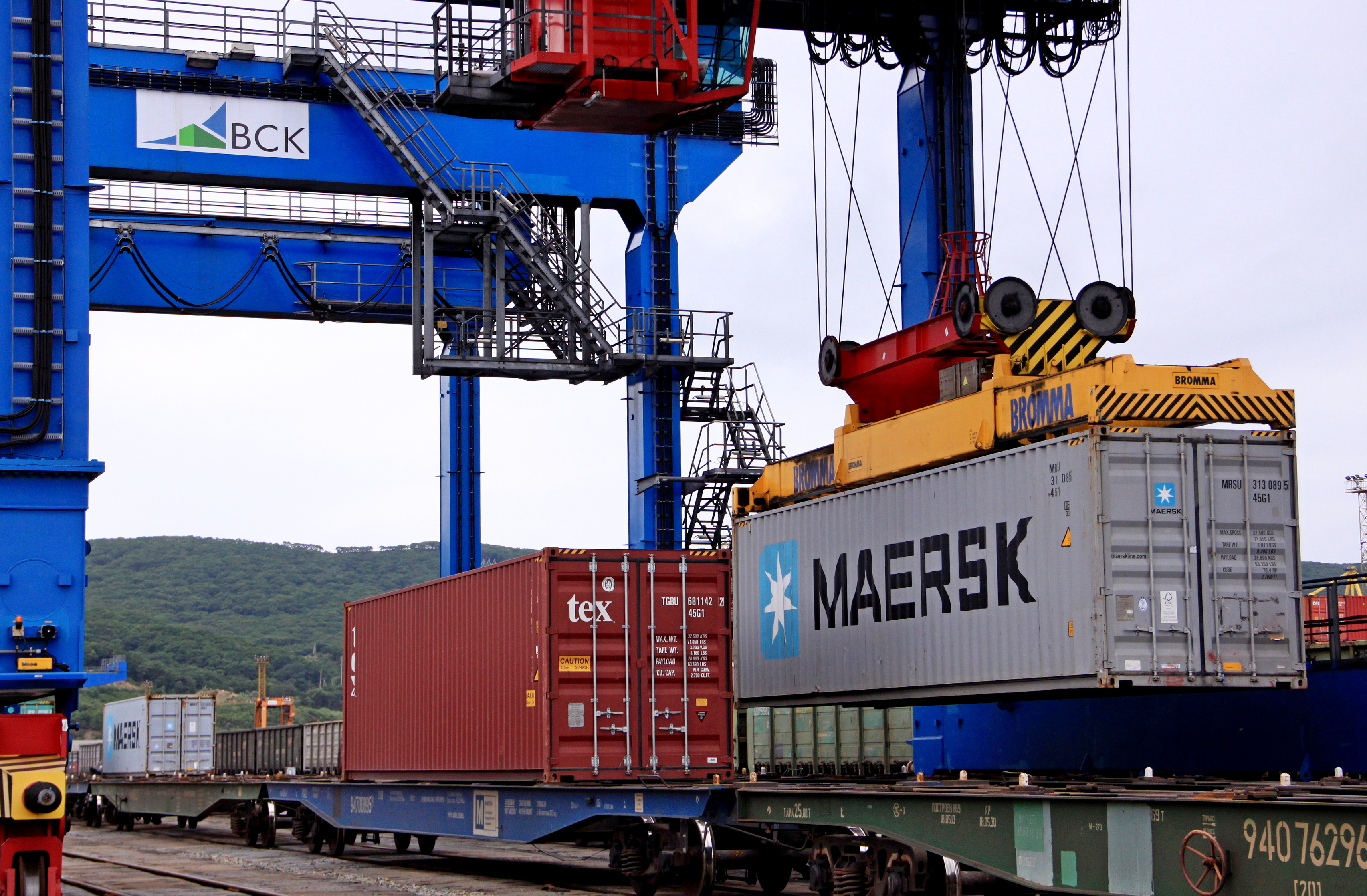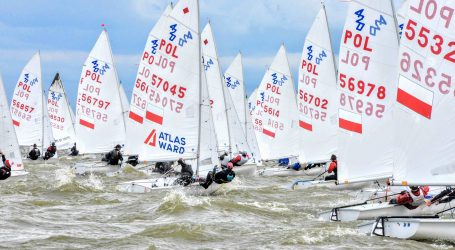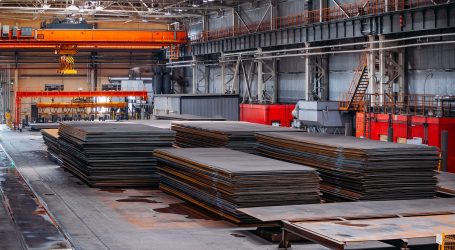Reviving the shipbuilding industry in Europe – but how to do it?
On October 11, 2024, the 23rd edition of the MARITIME ECONOMY FORUM was held at the Pomeranian Science and Technology Park in Gdynia. This is the most important meeting of the maritime industry in Poland, next to BALTEXPO.
The meeting gathered a record number of participants in the history of the Forum – nearly 700 people – which proves the growing interest in maritime economy and understanding its key importance for Poland’s security in all aspects.
The partner of the event was the Association of Polish Maritime Industries FORUM OKRĘTOWE, which organized a discussion panel devoted to the reviving of the shipbuilding industry in Europe, preceded by a speech by the honorary guest of the event – the Secretary General of SEA Europe, Christophe Tytgat.
Read also: Christophe Tytgat: Brussels is changing its approach to the shipbuilding industry
The introduction to the debate was delivered by the leader of the shipbuilding panel and director of the Association of Polish Maritime Industries FORUM OKRĘTOWE, Irek Karaśkiewicz.
Read also: Our dangerous dependency on China
The moderator of the panel discussion was Grzegorz Landowski, editor-in-chief of the portal PortalMorski.pl and the monthly “Polska na Morzu”, who has been arguing for years about the need to revive the shipbuilding industry in Europe.
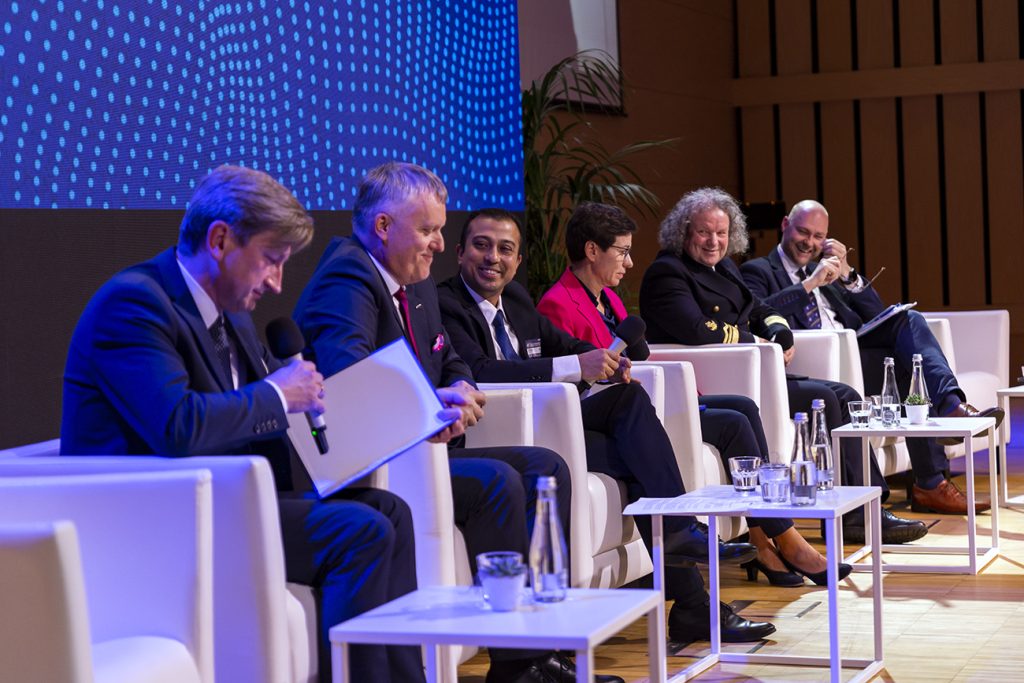
The cross-section of guests invited to the panel was very diverse, and the intention was to show the widest possible spectrum of perspectives on the issue. Therefore, a representative of the European Commission, a shipyard – new building and ship repair, a ship equipment manufacturer, a shipowners’ association and an organization of employers of the shipbuilding industry were invited.
The panel discussion was divided into two parts. In the first part, its participants focused on diagnosing the current situation and tried to answer the question: why has Europe lost and continues to lose its leading position in shipbuilding? The second part was a “brainstorming session”, during which participants discussed what specific steps should be taken to revive the shipbuilding industry on our continent.
Today we return to this event once again. After it ended, we asked each panel participant to recapitulate their thoughts on this topic.
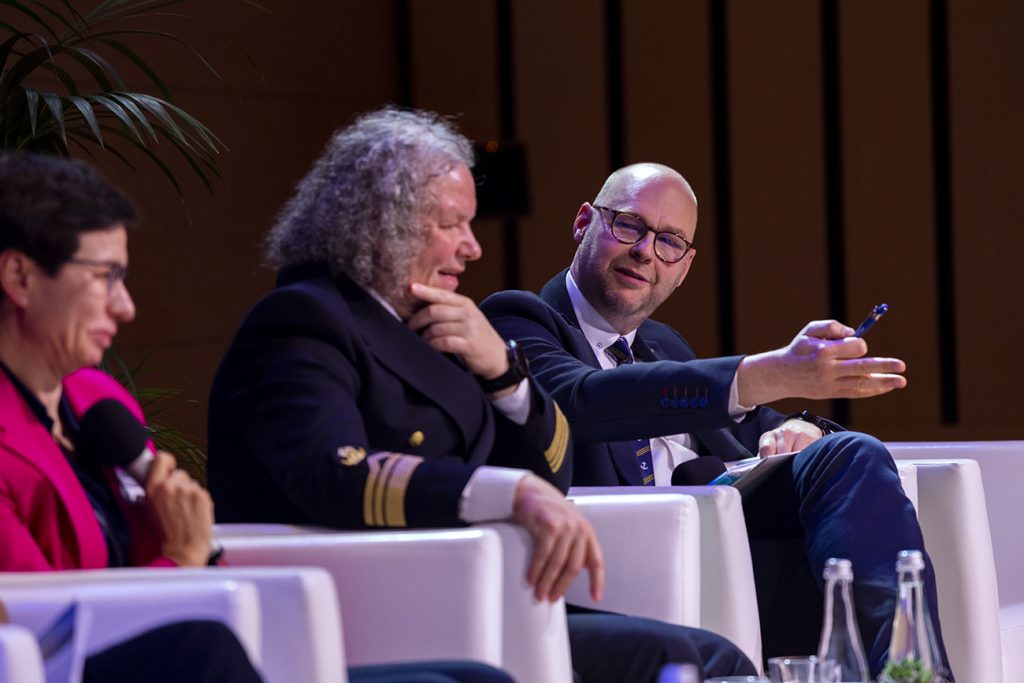
Christophe Tytgat, Secretary General of SEA Europe i CESA
SEA Europe welcomes the European Commission’s decision to introduce an industrial maritime strategy. Such strategy should first and foremost address the long-standing challenges and needs of European shipyards and maritime equipment manufacturers (known as the “maritime technology industry”).
Despite being strategic for Europe – and in contrast to European shipowners and ports – the maritime technology industry was treated as any non-strategic economic sector in Europe for 25 years. As a result, Europe has lost most of its shipbuilding activities to Asia and is now also seriously challenged on its remaining global leadership in complex shipbuilding and in advanced maritime equipment manufacturing.
A major challenge for the forthcoming industrial maritime strategy will be encouraging European shipowners to place orders in Europe again. Currently, 90% of their orders go to Asia because of lower costs and other financial benefits. However, with the lessons learned from the pandemic and the war in Ukraine as well as in the current geopolitical context, safeguarding and reinforcing Europe’s maritime industrial capacity and thus Europe’s maritime strategic autonomy are also to the benefit of European shipowners. To that end, the industrial maritime strategy must introduce framework conditions that support the global competitiveness of Europe’s maritime technology industry as well as Europe’s shipping industry.
The EU’s climate ambition can thereby help in creating business opportunities for the building of clean vessels or retrofit ships. But to that end, the strategy also needs to provide financial incentives to shipowners whilst offering them legal certainty and answers on fundamental questions on the types of clean fuels and clean technologies, their availability and cost.
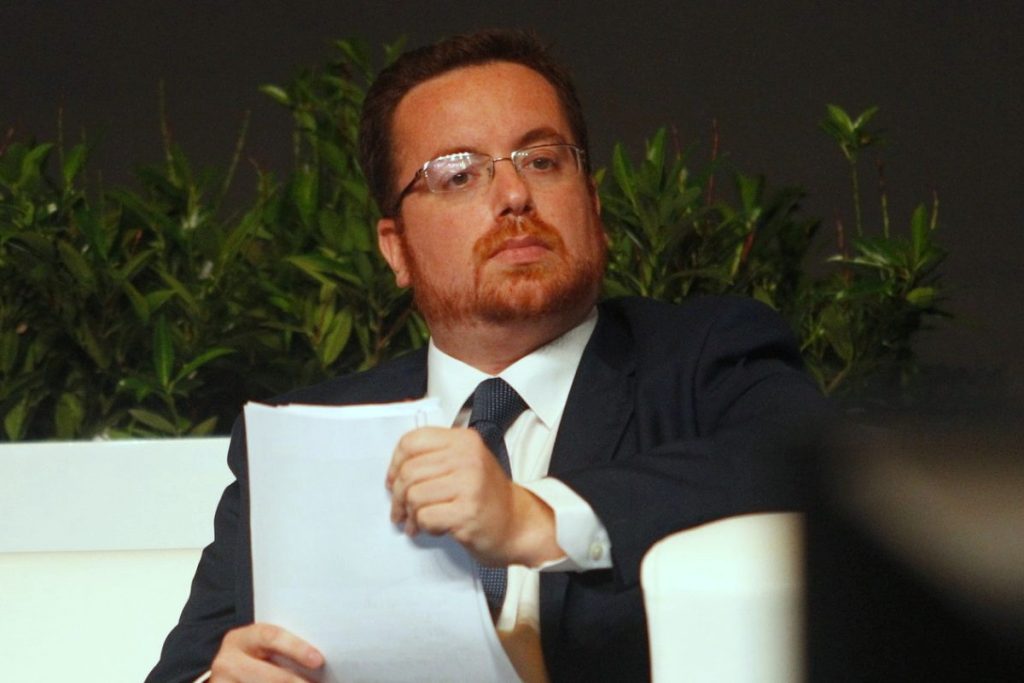
Dario Bazargan, European Commission – DG Internal Market, Industry, Entrepreneurship and SMEs (GROW)
The shipbuilding industrial base in Europe stands today at critical crossroads. It has a key role to play for the green and digital transformation of waterborne activities, but faces key challenges, including fierce global competition, financing gaps and an ageing workforce.
The European Commission is aware of such challenges and is committed to further enhancing the competitiveness, sustainability, and resilience of Europe’s maritime manufacturing sector, taking account of the international context.
In recent years, the Commission took several steps to strengthen the EU shipbuilding and maritime industry’s competitiveness, in fields like research and development, innovation funding, re/up-skilling of the workforce and in the naval domain, while engaging at international level.
As shown in our Mobility Transition Pathway, fostering a sustainable and competitive maritime industry future in Europe will need a coordinated approach potentially leveraging different tools and actions at EU, national, regional and sector level. It is a shared task and collective effort, where all relevant parties will have a key role to play: from our side we are committed to doing our part.
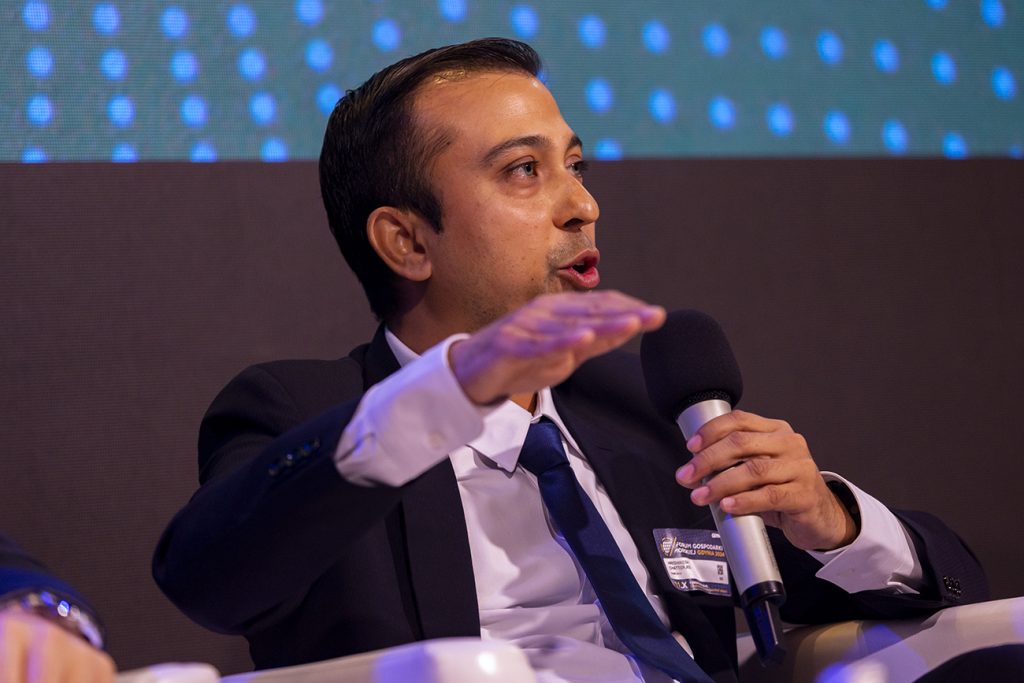
Hrishikesh Chatterjee, MAN Energy Solutions
The global shipbuilding for deep sea-going merchant vessels has predominately moved to Asia (specifically to China, South Korea and Japan). The maritime decarbonization agenda is moving at a rapid pace, especially after COVID pandemic where the demand spiked & IMO adoption strategy to reduce GHG emissions, a spike in newbuilding orders opting for alternative fuels.
The yards in Asia are full with orders and order backlog for delivery in 2027 and spilling over to post-2030. That means shipowners are desperate to get newbuild order slots and also for competitive prices.
This shows a clear indication that the maritime industry has accepted the challenge of placing orders for the future now with alternative fuels such as Methane, Methanol, and other alternative green fuels.
The biggest hurdle in newbuild are price and yard slot but more than that is equipment delivery and availability. Owners are in a dilemma if they place a order now in order to comply with upcoming regulations or wait & watch.
Re-infusing of Poland ship-building activities can be achieved with collaboration & partnership with strategic partners & alliances. Focus on Niche market, skilled workforce development, sustainable practices and infrastructure development. More with a general consensus in EU to declare shipbuilding as a strategic goal.
The metaphor “cake needs to be consumed in pieces” and the time is ideal now with the high interest from shipowners and high market activities.
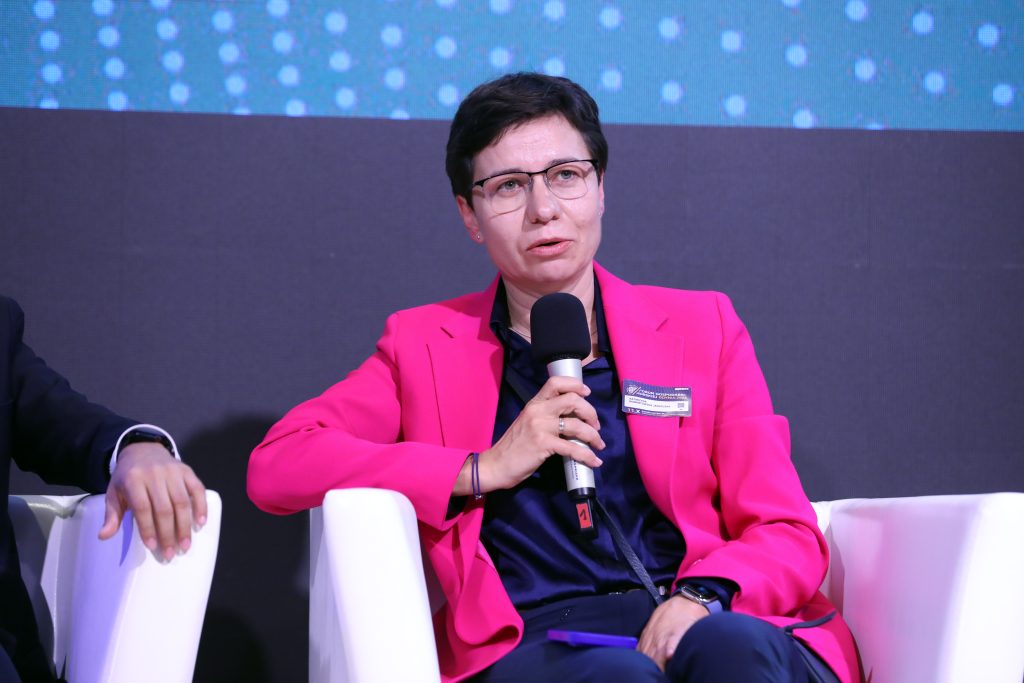
Kasia Romantowska, DAMEN Shipyards Group
Let’s be honest and face it. Europe had lost plenty of maritime market. Asia had invested into creation of shipyards capabilities which, at the certain point of time, met the global demand for a new and larger ships.
Maritime, the shipbuilding – is the engineering and the technology-based industry. Asian shipbuilders have made significant advancement in technology and production process allowing them to build ships faster and more cost efficient.
How the sustainability, especially decarbonization, and digitalization trends to be used on European favour? Let us openly discuss and inspire each other, to work out the Road Map how to make our European shipbuilding capable and competitive in vessel design, engineering, production, and post-sales services? How to have economy of scale effect applied into new vessel orders and make it working for European’s economical advantage?
Damen Shipyards Group’s insight into new maritime industry strategy recovery consists of four main topics.
- Focus on Navy. Security of critical infrastructure: offshore wind farms, cable on the sea bottom and safeguarding and protection of sea trade paths are the highest priority. Already existing capacity and capabilities of European shipyards are strategic key enables on the way towards strengthening the security of critical infrastructure. Most of it needs strategic investments into a design and a production facility. To robotize, to automate, to digitalize as many processes as possible, is essential for competition in effectiveness improvements.
- Focus on floating low emission public transport. Modern ferries, carriers – sustain products, with embedded cradle to cradle philosophy of the design and production. Enhancing circularity of resources which the product had been made from. Treat sustainability and ESG as supper opportunity and think how to make it work with benefit for us.
- European content. Today European content can be between 50-70% of a final product inventory and value. The goal is to maintain it. We must keep it; however, it is experienced that is more and more challenging.
- Stimulate the workmanship development on every level of the organizations. 1-2% world’s population are directly involved into the maritime economists. The industry is key economy contributor, suffers from: cultural, structural, educational barriers. One of the barriers its ‘the bad perception of the industry as the ‘old & dirty’. Maritime industry’s individual ESG strategies or widely applied the diversity and inclusion politics into the day-to-day business activities certainly may help to beat that bad perception.
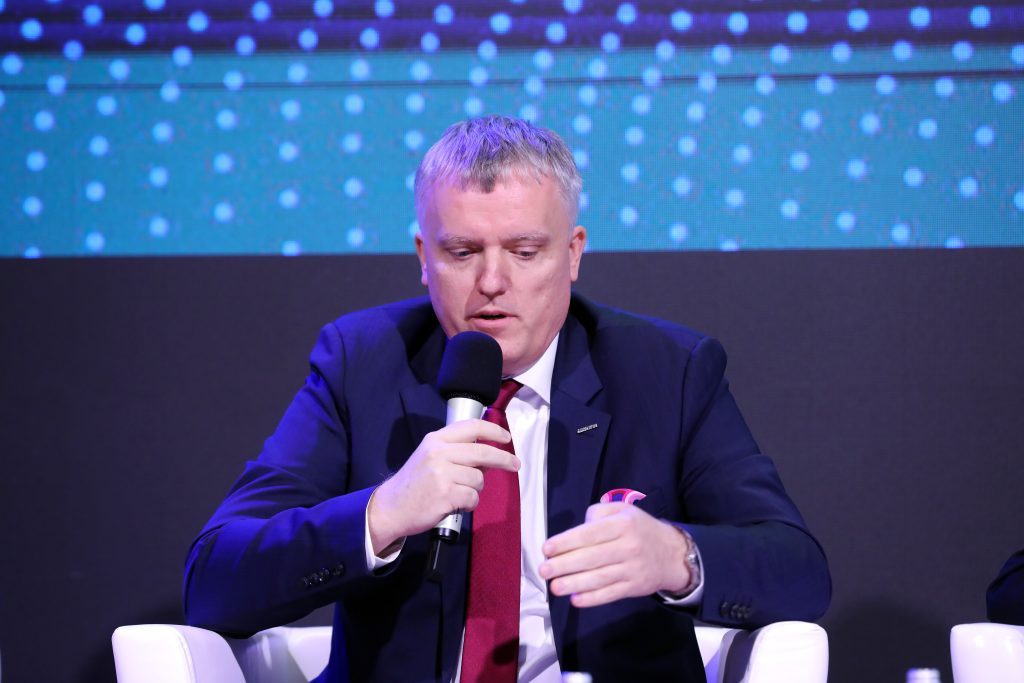
Marcin Seroka, board memeber of Gdansk Shiprepair Yard REMONTOWA
A key factor in the reviving of the shipbuilding industry will be access to highly qualified staff. Our shipyard relies on its own resources – we employ approximately 2,000 people and we cannot afford to cut costs in this area, even in times of economic downturn.
At a time when most shipyards in Europe were reducing employment, increasing the share of external contractors or employing workers on the so-called “junk contracts”, we did exactly the opposite, investing in the development of our own staff. Today we can see that this strategy has paid off.
Having appropriate facilities, we are currently working on a large decarbonization project, we devote a lot of attention to it, and this gives us a certain advantage because we have competent employees. We invest in our staff, both current and future – in a series of training courses at all levels. Having appropriate human resources, today in some segments we are winning the competition with Asian shipyards, including Chinese ones. Without a large and experienced staff – even with the help of the European Union – we will not be able to do much.
An important factor for employees is safety in increasingly uncertain times, and we try to provide it as comprehensively as possible. In this context, dialogue and respectful, partnership-based cooperation with trade unions are crucial for us. This is one one of the foundations of our success.
Promotion of the shipbuilding industry among young people is also very important. Showing young people that this is an interesting and modern industry and that getting involved in it is the right life choice. That is why we invest a lot in fairs and contacts with schools and universities, organizing visits to the shipyard, so that young people can see interesting projects with their own eyes and talk to shipyard workers. The industry must be very open to young people – it is an investment that will pay off greatly
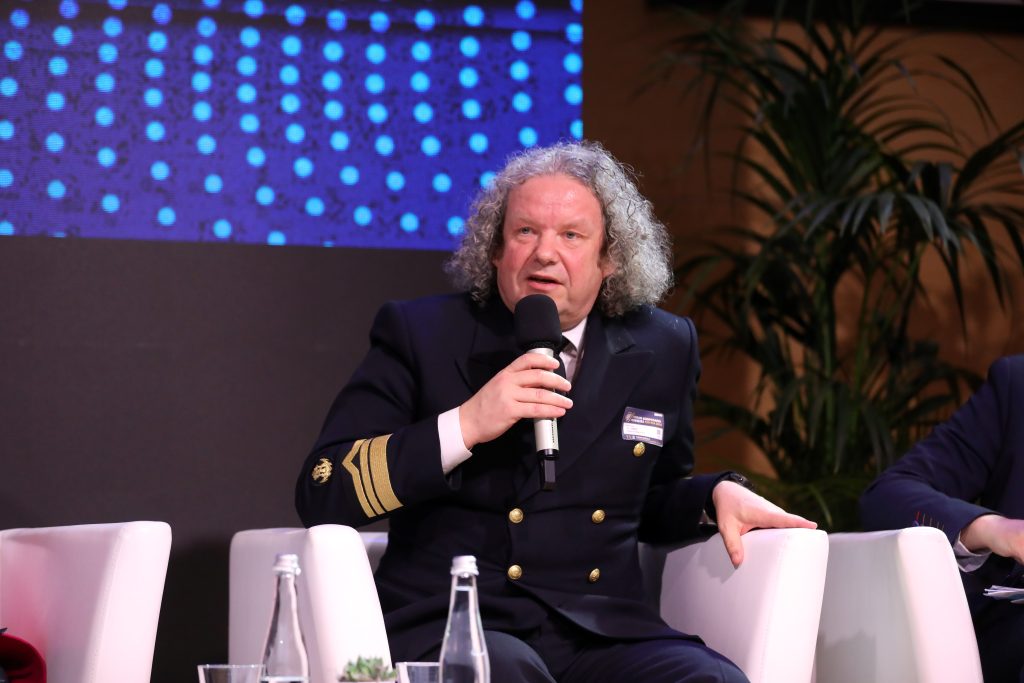
Dariusz Jellonnek, president of Polish Shipping Companies Association
Before the shipowner decides to build a new ship, he must first analyze the ship’s construction from an economic and financial perspective. Based on his knowledge, experience and demand for a new unit, he is able to calculate how much the ship will earn annually. When it comes to crew and operating costs, they are also very easy to calculate. Of course, the price of fuel may vary significantly in the coming years (wars, embargoes, etc.), but most often it is the cost of the ship charterer.
And here we come to the heart of the matter in making decisions about new construction, i.e. the costs of bank loans or ship mortgages, and the availability of such a loan.
Unfortunately, after the financial crisis in 2008, European Banks significantly increased the risk of all investments, including the construction of new ships. Many shipowners went bankrupt at that time and banks were left with unpaid ships. This situation resulted in much lower availability of loans and very high security requirements, often exceeding the capabilities of shipowners, and this resulted in dramatically low levels of orders for the construction of new ships in European shipyards.
In short, not only are shipbuilding prices in European shipyards much higher, but also the availability of loans/collateral is beyond the financial capabilities of shipowners.
Most European shipowners build their ships in the Far East, especially China. Prices for new construction are much lower, and Chinese banks have no problems offering convenient loans with a very low level of security. This is because the Chinese government guarantees these loans and it drives the shipbuilding market in their country. Also in terms of quality, especially in simple ships (bulk carriers, tankers), Chinese shipyards are not worse than European shipyards.
I think that the currently changing regulations/requirements regarding new zero-emission ships may change the situation in the shipbuilding market in Europe. Europe, as an innovation leader, can be the first to introduce new solutions that will be available in Europe first. This may be the a new chapter for European shipyards.
However, one of the most important elements will remain the financing of a new projects. A question for European Union politicians: are we able to change the way we approach the risk of financing new ships and provide bank guarantees at the level of individual European Union countries or even at the EU level?
The answer to this question will show us whether we really want to change current trends and break China’s hegemony in this aspect.
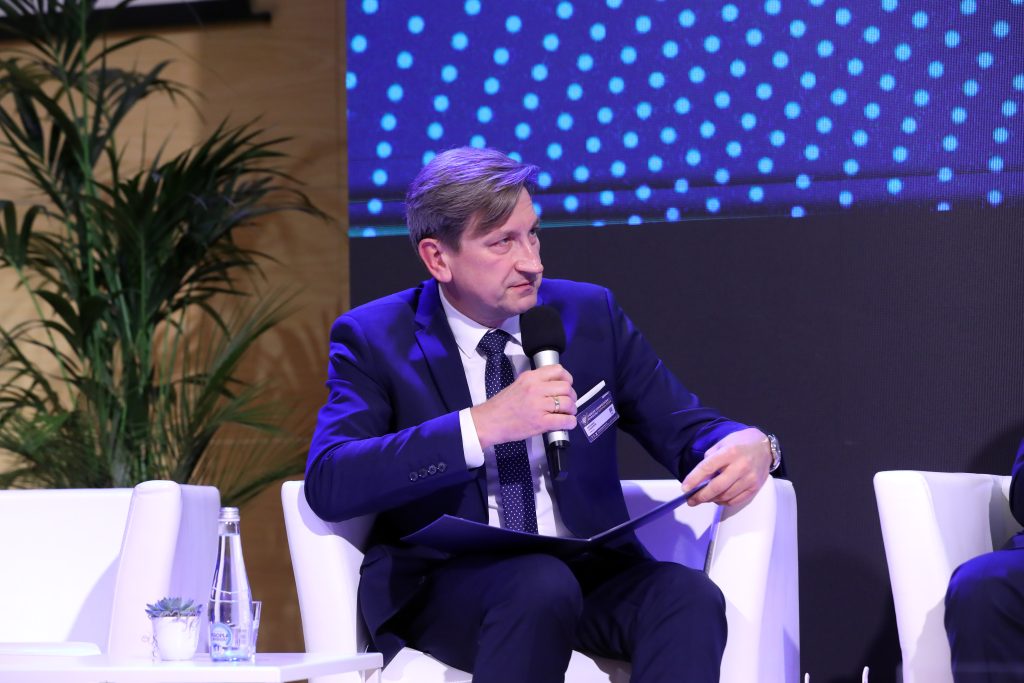
The discussions were summed up by the panel moderator – Grzegorz Landowski, editor-in-chief of the portal PortalMorski.pl and the monthly magazine “Poland at Sea”.
China, where 175 shipyards currently operate, accounts for more than half of the global order portfolio based on value and CGT, while the share of 300 European shipyards in global orders (by value) is only 11%. The panelists pointed to the reasons for this gap – the lack of an EU sector policy, limited availability of financing for the construction of new ships by the banks, fewer and fewer people to work in the shipbuilding industry and low production efficiency.
I am glad that after 36 years of unsuccessful negotiations with Asian countries regarding the “principles of the fair competition” at the OECD level, the European Commission has been persuaded to develop a “Made in Europe” strategy for the shipbuilding sector. However, it is not known when such document will be ready or what it will contain. It is well known that “the EU mills grind slowly.” I also have some other concerns.
China is an authoritarian country implementing a plan of expansion for 20, 30 and more years, competing globally with the rest of the world, and its shipowners and shipyards are a key element of this plan. The lack of internal market competition – as it is in EU – is an element of this geopolitics.
In Europe is different story. Local shipowners, as well as equipment manufacturers, are guided by profits, especially in the short and medium term. The EU, currently experiencing a structural crisis and partially dependent on Chinese investments, is a conglomerate of many countries with their own interests and political ambitions, which will be difficult to reconcile. How will the future strategy address, for example, the issue of internal competition on the EU shipbuilding market? Will there be uniform rules of support for shipowners or shipyards of all EU countries who want, for example, to order and build ships in their own shipyards? And maybe they will be equal and more equal here too? History shows that the European Commission has so far applied double standards.
The panelists emphasized that an opportunity for Europe is the decarbonization of the fleet. However, it is from China that Europe is ordering more and more low-emission ships as it pursues its own climate goals. Moreover, this country also took over most of the European orders for new offshore vessels, worth a total of USD 34.7 billion (in Europe, orders worth USD 3.4 billion). So let’s not count on the fact that wind farms in the Polish Baltic Sea will be serviced by domestic shipowners with ships from Polish shipyards. Rather, these will be ships of large European players, built in China
The only segment in which Europe is (still) winning is the construction of passenger ships, cruise ships and warships – they were ordered here for a total of USD 43.9 billion, while the value of such contracts in China is lower – USD 30.8 billion. With one remark – everyone orders and builds warships in their own shipyards.
While waiting for the European strategy for shipbuilding, let’s focus on this segment, and this is what is happening. We build Ro-Pax ferries and ships, thanks to domestic orders, with state support, which I would like to emphasize. New, large Ro-Pax ships made in Poland, built in Gdańsk according to the highest European equipment standards, will allow Polish shipowners to compete on the Baltic Sea for 20 or more years.
Polish shipyards also build warships for the Polish Navy. In a state of war beyond our eastern border and a threat to the security of Poland and Europe, new ships in the Baltic Sea – NATO’s internal sea – will be needed many, many more, which I believe will be favored by the policy of the new US administration, demanding greater military spending by European countries NATO, including on the eastern flank.
So let’s build ships taking advantage of the international situation, mastering new technologies, developing competences and attracting new employees to the shipyard, because we can do it and we have the appropriate resources. Let’s do our thing.
Source: The Association of Polish Maritime Industries FORUM OKRĘTOWE

